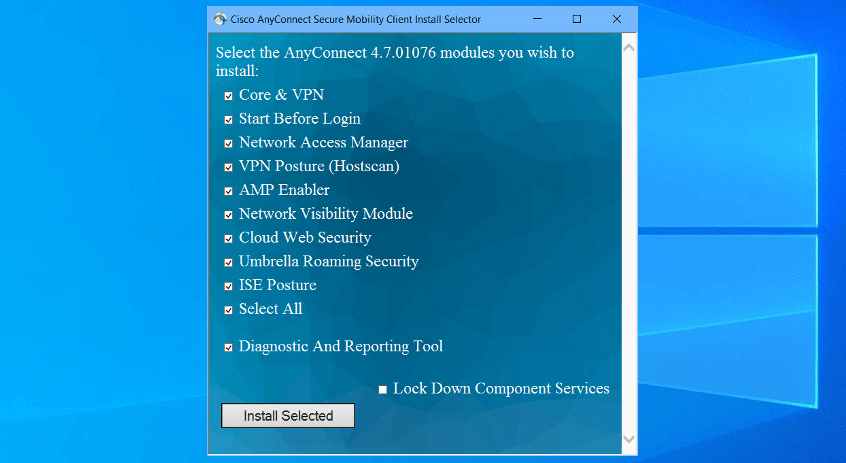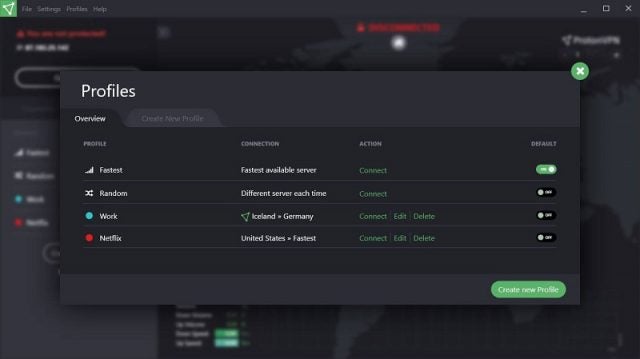Installing the VPN Client
Cisco AnyConnect VPN Client for Linux is used to establish secure connections for remote access in a Virtual Private Network. The Client supports all Cisco VPN access products and servers. It’s a Virtual Private Network available for a variety of configuration and OS. In fact, the new Cisco AnyConnect Secure Mobility Client v4.x works in Windows, Mac OS X, and even Linux. It new AnyConnect is way better than the previous Cisco VPN client. Earlier, Cisco VPN client only supported only the IPsec VPN option.
- Download the Anyconnect VPN client.
- From the Terminal, navigate to the Downloads folder and unzip the file by typing [tar xzvf anyconnect-xxx.tar.gz]
- NOTE: The *actual* file name will contain the name of the current version of the installer (e.g. anyconnect-linux64-4.5.03040-predeploy-k9.tar.gz)
- A folder with the same name as the file will appear in the current directory. Open the folder and then go to the vpn directory, and once you are there type [./vpn_install.sh]
- The VPN clientwill be installed on your system and the vpnagentd process will be started. This process will be started each time your system is booted.
- NOTE: Ubuntu/Debian users should run this command to download a dependency for the VPN UI: [sudo apt-get install libpangox-1.0-0]
Starting the VPN Client
- To start the client from the terminal, type [/opt/cisco/anyconnect/bin/vpnui]. Note: if you are not running a GUI, you can enter interactive mode by entering[/opt/cisco/anyconnect/bin/vpn]
- NOTE: If you are using a desktop environment, you should be able to find the client in one of your menus as well (e.g. in a RHEL environment, look in Applications -> Internet).
- In the “Connect to:” box, type vpn.uci.edu and press Return on your keyboard. Note: in interactive mode type [connect vpn.uci.edu]
- In the “Group” menu that will appear, select the tunnel you wish to use, usually “UCI” or “UCIFull”. (See the differences in the Tunnels below.)
- Enter your UCInetID and password in the appropriate boxes and click “Connect”.
- You should get a banner box. When you do, click “Accept” and you are now connected.
Possible Error Messages
If you get one of the following messages when you try to connect to the campus VPN service:
- “Connection attempt has failed due to server certificate problem”
- “AnyConnect cannot confirm it is connected to your secure gateway”
Cisco Vpn Client Download Linux Ubuntu
this means that the AnyConnect client cannot validate the certificate on the campus VPN service.
To remedy this, please download and unzip this file and follow the directions in the README file to install the InCommon certificate files on your system.
Ubuntu Linux
If you are using Ubuntu Linux and are having problems using the VPN, Jeff Stern has instructions for making the AnyConnect VPN work on Ubuntu. See
http://www.socsci.uci.edu/~jstern/uci_vpn_ubuntu/ for more information.
Linux Openconnect Client
Note: Using the Linux openconnect software is not supported by OIT. If you have problems using this, OIT will not be able to help you. These instructions are provided for you if you want to use something other than the supported Cisco AnyConnect client on your Linux system.
Some Linux distributions include a VPN client called openconnect that can be used with the the UCI VPN service. The instructions below are for Fedora Linux. Other distributions may be similar.
- From the terminal, type [sudo openconnect vpn.uci.edu -u UCInetID]
- replace UCInetID with your actual UCInetID
- if you don't have openconnect installed, you can download it from your distro's software repo [e.g. sudo apt-get install openconnect]
- You will be prompted for the Group to use. Type one of the options, usually UCI or UCIFull (it's not case-sensitive)
- You will be prompted for your password. After you give the client your password you will be logged in.
You can minimize the terminal window while you do your work (don’t close it or you will lose your VPN connection). When you are done type ^C (control-c) to terminate openconnect and your VPN session will be logged out.
(Jeff Stern has also written a page on setting up Openconnect for Debian/Ubuntu users, at http://www.socsci.uci.edu/~jstern/uci_vpn_ubuntu/ubuntu-openconnect-uci-instructions.html.)
Topics Map > Networking > Virtual Private Networking (VPN)
This page contains links to download and installation instructions for VPN software for Linux.
University of Illinois students, faculty, and staff can use these directions to set up some Linux computers or devices to connect to the Virtual Private Network (VPN).
Cisco-supported Versions
Some versions of Red Hat Linux and Ubuntu are compatible with the Cisco AnyConnect VPN client. See the AnyConnect 4.8 Release Notes for a detailed listing of which versions and features are supported.
Downloading the VPN software
From the WebStore, download the VPN software that applies to your system's hardware (only 64 bit is supported in the 4.x software).

If you are using Ubuntu, you may also need to install the OpenConnect Network Manager in order to make the GUI work correctly:
for Ubuntu 16 try:
for older versions of Ubuntu, this command might be needed.
The information below has been modeled on the University of California at Irvine instructions provided at:
Additional troubleshooting tips are available there.
Red Hat Linux
As root, first unzip and untar the file, then run the vpn_install shell script. [Note the file name and directory name will change as the version changes. The example below was from version 4.3.05017.]
The vpn client will be installed on your system and the vpnagentd process will be started. This process will be started each time your system is booted.

Starting the VPN client
To start the VPN client:

Command line:
In a terminal window, type/opt/cisco/anyconnect/bin/vpnuiGnome user interface:
Look for Cisco AnyConnect in the menu system.- Fedora:
Look in Applications -> Internet
The Connect to: box appears.
- Enter vpn.illinois.edu and press return.
When the connection begins, enter the following:
- Group menu: Select 1_SplitTunnel_Default
(Note: This is the most common choice. See About VPN Profiles for information about the alternatives, such as Tunnel All for access to library resources.) - Username: Your NetID
(or, if you're a guest, your guest ID) - Password: Your Active Directory password
(or, if you're a guest, your guest password)
In the box that appears, click Accept.
You are now ready to use your VPN connection.
Ubuntu
A good source to help with this: http://www.socsci.uci.edu/~jstern/uci_vpn_ubuntu/
First, extract the files and install as root:
Accept the license agreement when prompted.
Then install the Ubuntu Network Manager plugins (note, even with this package Ubuntu 16 does not support the GUI interface: see https://askubuntu.com/questions/760864/no-more-anyconnect-compatible-vpn-transport-in-ubuntu-16-04 for more information):
To configure the VPN using the Network Manager:
- Click on the 'Network Manager' icon in your System Tray on your desktop.
- In the menu that appears, go to VPN Connections -> Configure VPN
- Click Add.
- Choose Cisco AnyConnect Compatible VPN (openconnect) and click Create.
- Enter the following information:
- Connection name: Tech Services VPN
- Gateway: vpn.illinois.edu
- User name: Leave blank at this point.
- Click Save.
Starting the VPN client
- Click on the 'Network Manager' icon in your System Tray on your desktop.
- In the menu that appears, go to VPN Connections and click Tech Services VPN.
- Click on the connection icon (two screens).
- Enter the following information:
- Group menu: Select 1_SplitTunnel_Default
(Note: This is the most common choice. See About VPN Profiles for information about the alternatives.) - Username: Your NetID
(or, if you're a guest, your guest ID) - Password: Your Active Directory password
(or, if you're a guest, your guest password)
- Group menu: Select 1_SplitTunnel_Default
- Click Login.
sudo service network-manager restart
sudo service networking restart
Cisco Anyconnect Linux
Disconnecting the VPN client
Cisco Anyconnect Client Download Linux
- Click on the 'Network Manager' icon in your System Tray on your desktop.
- Go to VPN Connections -> Disconnect VPN.
